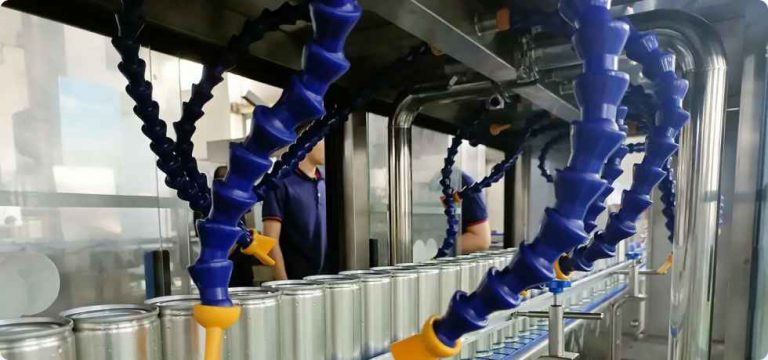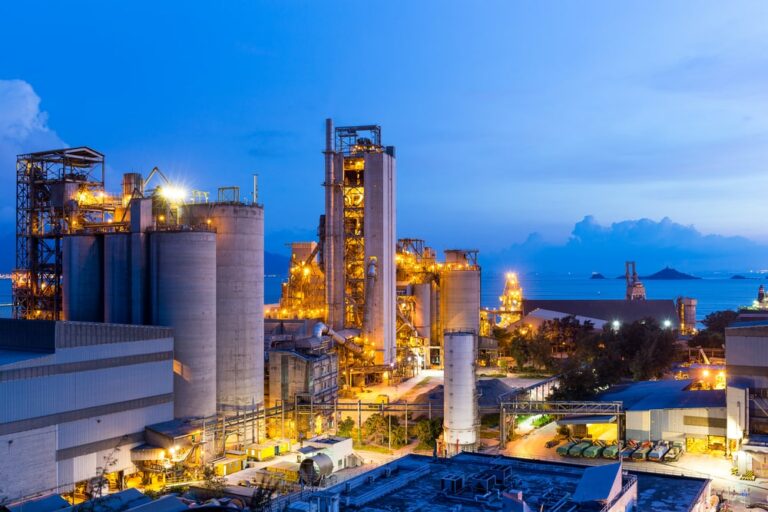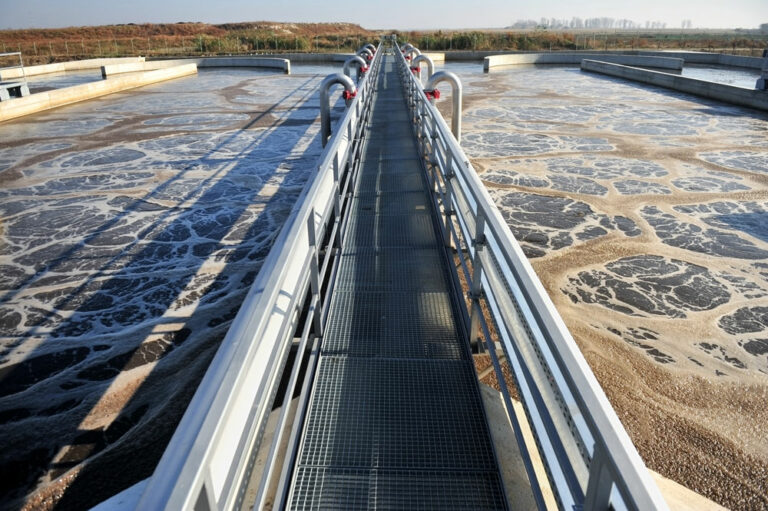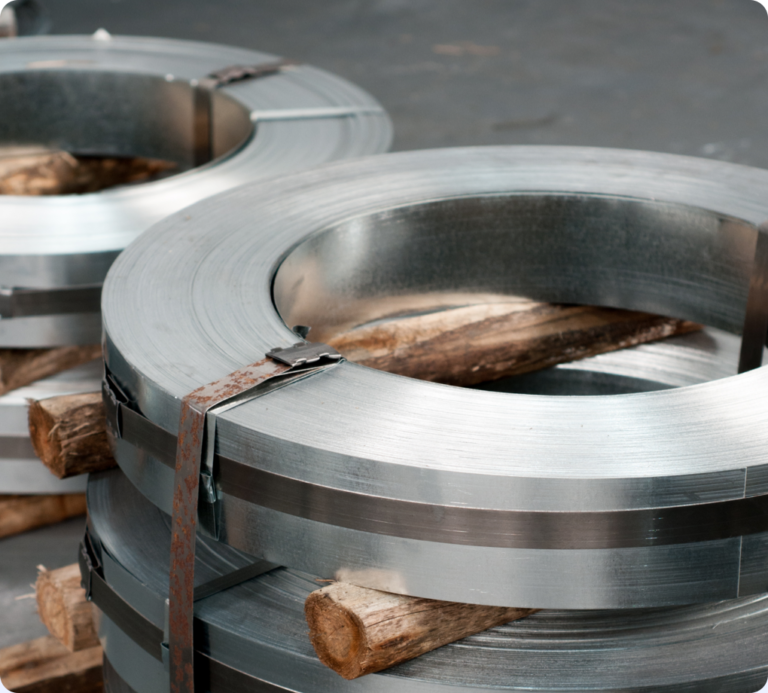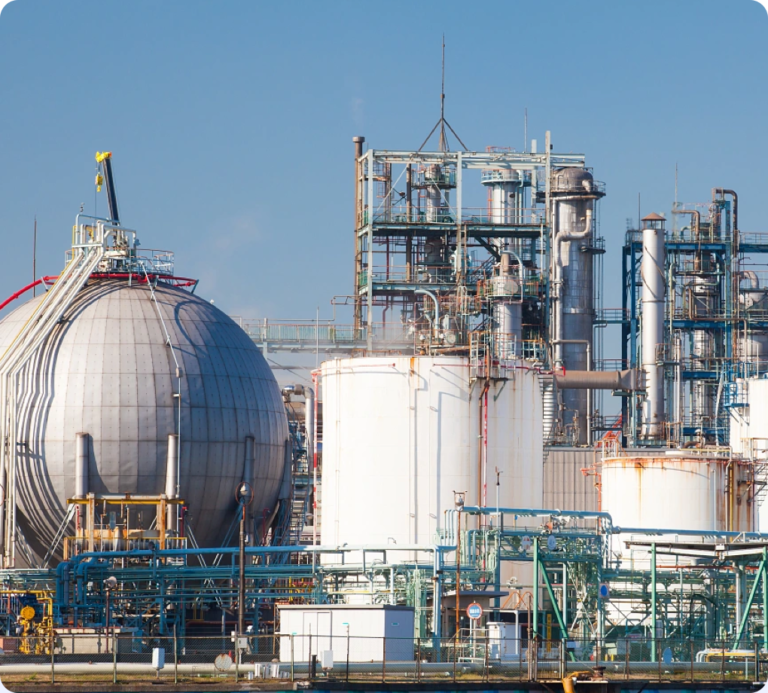Many end user is confused why the blower technology is upgraded to turbo blower? Comparing with traditional roots blower,single-stage and multistage centrifugal blower,RAETTS centrifugal air suspension blower and maglev turbo blower has simple structure:they don’t need coupling connection and oil-lubrication.The daily maintenance of turbo air blower only need to change the dust filter.The main parts of the turbo blower is including high speed permanent magnet synchronous motor(efficiency is about 97%),ternary flow impeller(Variable efficiency up to 87%),suspension bearing(air foil bearing or maglev bearing),VFD, and PLC control system.The traditional industrial air blowers normally use three-phase asynchronous motor(efficiency is about 88%),lobe impeller(efficiency is about 60%),ball bearing,belt or coupling connection.Since the air turbo blowers don’t need belt or coupling for connection,so there is not energy lost during transmission.The efficiency of the turbo blower is about 76% while the roots air blower efficiency is about 40% and multistage air blower efficiency is about 50%.The total energy saving of centrifugal turbo blower is about 25%-30%,comparing with traditional roots blower or other type centrifugal blower.
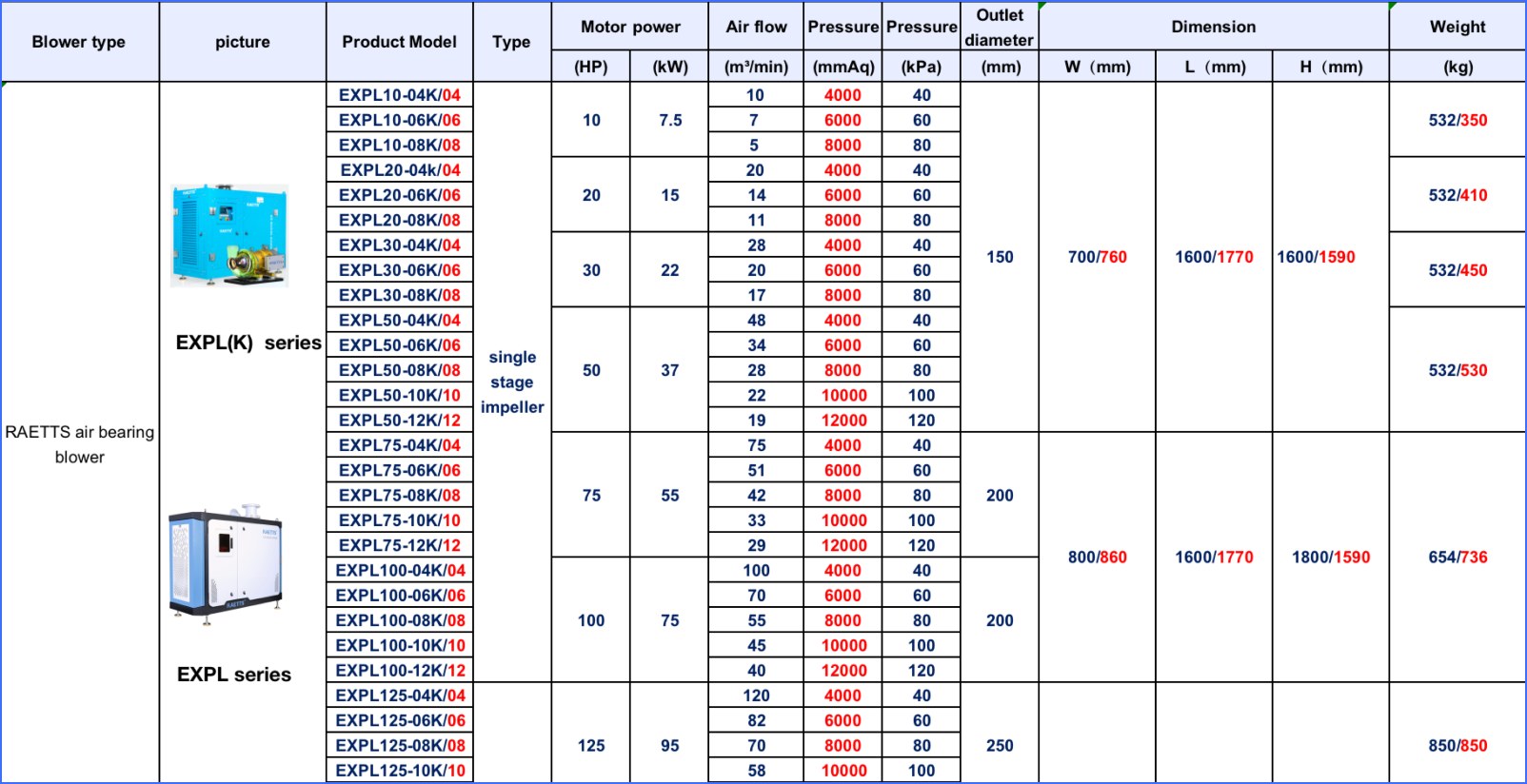
| Product name | aeration blower manufacturer |
| Keyword | turbo compressor,air bearing blower,RAETTS Turbo Blower,Lower Noise Blowers |
| Place of Origin | China |
| Feature | RAETTS air bearing turbo blower is a brand-new concept blower, which integrates the main core technologies such as “air suspension bearing”, “permanent magnet ultra-high-speed motor”, “high-precision aviation-grade impeller”, and creates a new era of ultra-high efficiency ,low noise and low energy consumption. |
| Dimensions | 714mm*717mm*808mm, (Contact us for specific information to confirm) |
| Applicable Industries | food and beverage, etc. |
| Weight | 436kg |
| delivery date | the common delivery time will be 30-40 days. |
| terms of paymen | RAETTS accept payment by T/T(30% advance payment,70% before shipment) |
| Life span | 19 years (Contact us for specific information to confirm) |
| After-sale service | RAETTS warranty time for air bearing blower and maglev turbo blower is 24months,for high speed centrifugal blower is 12 months. |
| Advantage | We keep good quality and competitive price to ensure our customers benefit |
| Packing | 801x813x812mm(Contact us for specific information to confirm) |
| OEM/ODM | Customization Service Provided |
| Sales country | All over the world for example:Svalbard,San Marino,North Korea,Madagascar,Costa Rica,Germany |
| MOQ | 10pcs(Contact us for specific information to confirm) |
| production capacity | production capacity RAETTS production quantity for air bearing blower and maglev turbo blower is about 200pcs/month,for high speed centrifugal blower is about 700pcs/month. |
| raw materials | RAETTS air blower impeller in made of aluminum alloy,enclosure material is carbon steel,rotor material is cast iron.If customers need other special materials,we can also customized according to customers requirements |
| technology | RAETTS air bearing blower technology is originated from South Korea and maglev turbo blower technology is originated from Germany.RAETTS also have R&D team from Xi’an Jiaotong University |
| quality system | RAETTS has quality management system certificate ISO9001:2015 and enviromental management system certificate ISO14001:2015 |

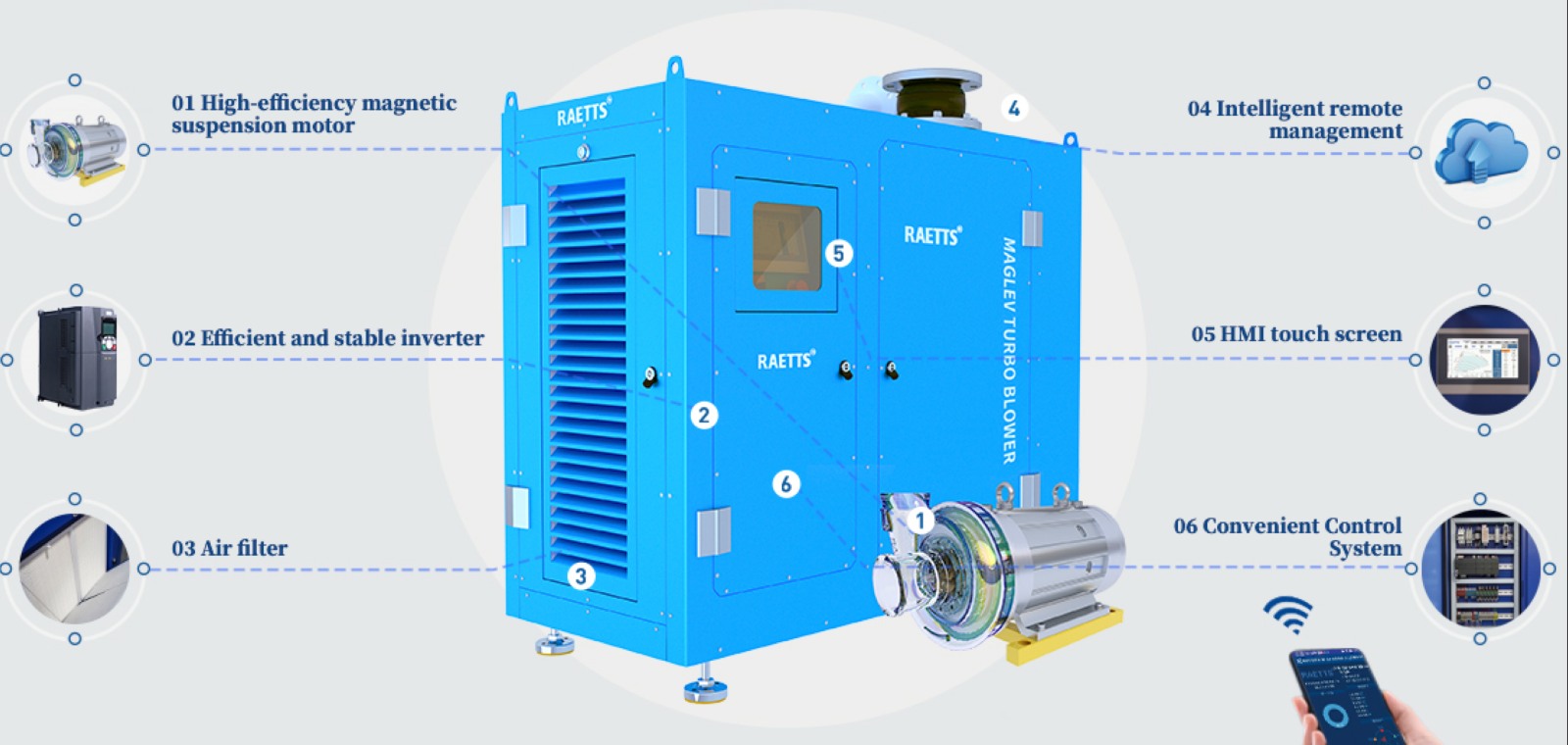
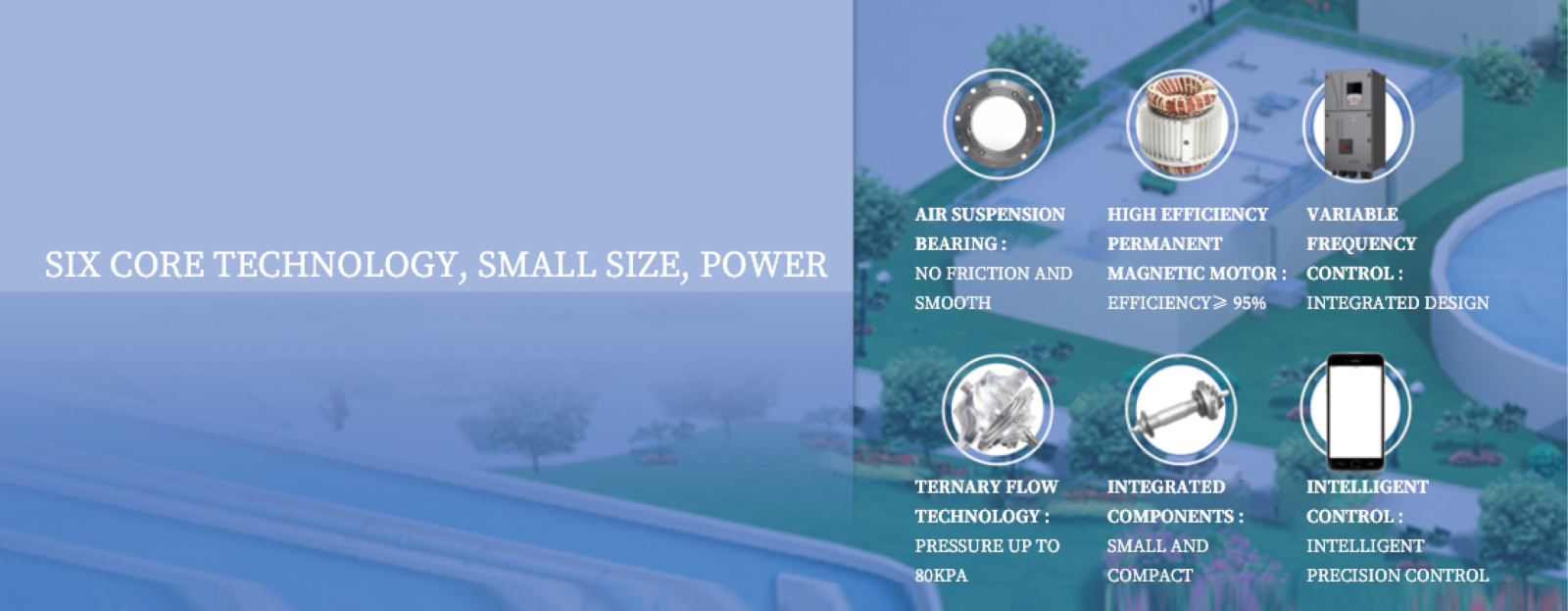
aeration blower manufacturer services FAQs Guide
Are you looking for a quick review guide about aeration blower manufacturerservices?
An ultimate FAQ buying guide is available to help you.This guide contains all the information about all the important facts, figures, and various processes regarding aeration blower manufacturer services.
Let’s continue!
2.Is a Turbo Blower Easy to Install and Integrate into My System?
3.Can a Turbo Blower Be Used for Both Vacuum and Compression Applications?
4.What Types of Materials Can a Turbo Blower Handle?
5.About aeration blower manufacturer customization services
6.What are the maintenance requirements for an aeration blower manufacturer?
7.What are the common applications of an aeration blower manufacturer?
8.About aeration blower manufacturer inventory
9.How Does a Turbo Blower Ensure Oil-Free Operation?
10.About aeration blower manufacturer production capacity
11.What is the Cost Comparison between a Turbo Blower and Other Types of Blowers?
12.What Safety Features Should I Look for in a Turbo Blower?
13.How Does a Turbo Blower Affected by Changes in Ambient Temperature?
14.How Does a Turbo Blower Handle Varying Inlet Conditions?
1.How Long is the Lifespan of a Turbo Blower?
Our aeration blower manufacturer products have competitive and differentiated advantages, and actively promote digital transformation and innovation.
The lifespan of a turbo blower can vary depending on several factors, including the quality of the blower, the operating conditions, and the maintenance and care it receives. On average, a well-maintained turbo blower can last anywhere from 10 to 20 years. However, with proper maintenance and care, some turbo blowers have been known to last up to 30 years or more. It is important to regularly inspect and service the blower to ensure it is functioning properly and to address any potential issues before they become major problems.
2.Is a Turbo Blower Easy to Install and Integrate into My System?
We continuously upgrade our skills and knowledge to adapt to changing aeration blower manufacturer market needs.
Yes, a turbo blower is relatively easy to install and integrate into a system. It typically comes with a mounting base or bracket that can be easily attached to a flat surface. The blower also has inlet and outlet connections that can be easily connected to the existing piping system. In addition, most turbo blowers come with a control panel that can be easily integrated into the system’s control system. However, it is important to consult the manufacturer’s installation instructions and guidelines to ensure proper installation and integration.
3.Can a Turbo Blower Be Used for Both Vacuum and Compression Applications?
We have broad development space in domestic and foreign markets. aeration blower manufacturer have great advantages in terms of price, quality, and delivery date.
Yes, a turbo blower can be used for both vacuum and compression applications. Turbo blowers are versatile machines that can be used for a variety of applications, including both vacuum and compression. They are commonly used in industries such as wastewater treatment, pneumatic conveying, and industrial processes.
In vacuum applications, the turbo blower is used to create a negative pressure or suction to remove air or other gases from a system. This is commonly used in vacuum pumps for packaging, vacuum cleaners, and other industrial processes.
In compression applications, the turbo blower is used to increase the pressure of a gas or air stream. This is commonly used in pneumatic conveying systems, aeration systems, and other industrial processes.
The versatility of turbo blowers makes them a popular choice for many industries. They are energy-efficient, compact, and have a wide operating range, making them suitable for various applications. However, it is essential to ensure that the turbo blower is designed and selected specifically for the intended application to ensure optimal performance and efficiency.
4.What Types of Materials Can a Turbo Blower Handle?
We focus on teamwork and communication to achieve common goals, We attach great importance to this detail.
Turbo blowers are versatile machines that can handle a wide range of materials. Some of the most common materials that can be handled by a turbo blower include:
1. Air and gases: Turbo blowers are primarily used for moving air and gases in various industrial processes. They can handle a wide range of gases, including air, nitrogen, oxygen, and other inert gases.
2. Liquids: Turbo blowers can also handle liquids, such as water, oil, and other fluids. They are commonly used in wastewater treatment plants to aerate and mix liquids.
3. Solids: Turbo blowers can handle solid materials in the form of dust, powders, and granules. They are often used in pneumatic conveying systems to transport solid materials in industries such as food processing, pharmaceuticals, and chemical manufacturing.
4. Vapors: Turbo blowers can handle vapors and fumes from various industrial processes. They are commonly used in ventilation systems to remove harmful vapors and maintain a safe working environment.
5. Particulates: Turbo blowers can handle particulate matter, such as dust, dirt, and debris. They are often used in industrial cleaning applications to remove debris and maintain a clean working environment.
6. Fibrous materials: Turbo blowers can handle fibrous materials, such as paper, textiles, and wood fibers. They are commonly used in paper mills and textile factories to move and process these materials.
7. Corrosive materials: Turbo blowers can handle corrosive materials, such as acids and chemicals. They are often made from corrosion-resistant materials to withstand exposure to these substances.
It is important to note that the specific materials a turbo blower can handle may vary depending on its design and construction. It is always best to consult the manufacturer or a technical expert to determine if a turbo blower is suitable for a specific material.
5.About aeration blower manufacturer customization services
RAETTS has more than 20 peoples R&D team,which can help customer to do customization for the air blowers to meet the different applications
6.What are the maintenance requirements for an aeration blower manufacturer?
Different types of air blowers have different maintenance requirements,for traditional roots blower,end users need to add oil for lubrication,replace the ball bearing and change the air inlet filter periodically.But for turbo blower,the maintenance is quite easy and convenient,end users only need to change the air inlet filters 1-3 months.
7.What are the common applications of an aeration blower manufacturer?
The air blower can be applied for wastewater treatment aeration,pneumatic conveying,sandblaster,combustion support,galvanization,air knife drying,aquaculture oxygenation,fish farming,etc.
8.About aeration blower manufacturer inventory
For air bearing blower and maglev turbo blower,RAETTS doesn’t make stock,only produce air blower according to customers order(since different application site may need different designs).For high speed centrifugal blower,RAETTS makes stock.
9.How Does a Turbo Blower Ensure Oil-Free Operation?
We pay attention to user experience and product quality, and provide the best product quality and lowest production cost for cooperative customers.
A turbo blower ensures oil-free operation through its design and construction, as well as through the use of specialized components and systems.
1. Oil-Free Design: Turbo blowers are designed to operate without the need for oil lubrication. This means that all the moving parts, such as the impeller and bearings, are designed to function without the use of oil. This eliminates the risk of oil contamination in the air stream.
2. Magnetic Bearings: Turbo blowers use magnetic bearings instead of traditional oil-lubricated bearings. These bearings use magnetic fields to levitate and support the rotating shaft, eliminating the need for oil lubrication. This also reduces friction and wear, resulting in longer service life and improved efficiency.
3. Air Cooling: Turbo blowers use air cooling instead of oil cooling. This means that the blower is cooled by the surrounding air, rather than by circulating oil. This eliminates the risk of oil leaks and contamination.
4. Sealed Enclosure: Turbo blowers are enclosed in a sealed housing, which prevents any oil from escaping into the air stream. This ensures that the air being delivered is completely oil-free.
5. Oil-Free Seals: The seals used in turbo blowers are specially designed to be oil-free. This prevents any oil from leaking into the air stream and ensures that the air being delivered is completely oil-free.
6. Oil-Free Filtration: Turbo blowers use specialized oil-free filtration systems to remove any oil or contaminants from the air stream. This ensures that the air being delivered is clean and oil-free.
Overall, the combination of these design features and specialized components ensures that a turbo blower operates without the need for oil lubrication, resulting in completely oil-free operation. This is essential for applications where oil contamination is not acceptable, such as in food and beverage production, pharmaceutical manufacturing, and electronics production.
10.About aeration blower manufacturer production capacity
RAETTS production quantity for air bearing blower and maglev turbo blower is about 200pcs/month,for high speed centrifugal blower is about 700pcs/month.
11.What is the Cost Comparison between a Turbo Blower and Other Types of Blowers?
We focus on providing high aeration blower manufacturer quality products and services.
The cost of a turbo blower can vary depending on the size, brand, and features. However, in general, turbo blowers tend to be more expensive than other types of blowers such as centrifugal blowers and positive displacement blowers.
Centrifugal blowers are typically the most affordable option, with prices ranging from $500 to $10,000. Positive displacement blowers are slightly more expensive, with prices ranging from $1,000 to $20,000.
On the other hand, turbo blowers can cost anywhere from $5,000 to $50,000, depending on the size and features. This makes them significantly more expensive than other types of blowers.
However, it is important to note that turbo blowers are more energy-efficient and have lower operating costs compared to other types of blowers. This means that while the initial cost may be higher, the long-term cost savings can make up for it.
Additionally, turbo blowers have a longer lifespan and require less maintenance, which can also contribute to cost savings in the long run.
Overall, the cost comparison between a turbo blower and other types of blowers will depend on the specific needs and requirements of the application. It is important to consider not just the initial cost, but also the long-term cost and efficiency when making a decision.
12.What Safety Features Should I Look for in a Turbo Blower?
As one of the top aeration blower manufacturer manufacturers in China, we take this very seriously.
1. Overload Protection: This feature automatically shuts off the blower if it becomes overloaded, preventing damage to the motor and other components.
2. Thermal Protection: This feature monitors the temperature of the blower and shuts it off if it becomes too hot, preventing overheating and potential fire hazards.
3. Ground Fault Circuit Interrupter (GFCI): A GFCI is a safety device that shuts off the power to the blower if it detects a ground fault or electrical leak, preventing electric shock.
4. Lockout/Tagout Capability: This feature allows the blower to be locked out and tagged out during maintenance or repair, preventing accidental start-up and ensuring the safety of maintenance workers.
5. Low Noise Level: Look for a turbo blower with a low noise level to protect your hearing and reduce noise pollution in the surrounding area.
6. Vibration Isolation: This feature reduces the vibration of the blower, making it safer to operate and reducing the risk of damage to surrounding structures.
7. Safety Guards: Some turbo blowers come with safety guards to prevent accidental contact with moving parts, reducing the risk of injury.
8. Emergency Stop Button: An emergency stop button allows for quick and easy shut-off in case of an emergency or malfunction.
9. Anti-Slip Feet: Look for a blower with anti-slip feet to prevent it from moving or tipping over during operation, ensuring the safety of the operator.
10. UL or CSA Certification: Make sure the turbo blower has been certified by a reputable organization such as UL (Underwriters Laboratories) or CSA (Canadian Standards Association) to ensure it meets safety standards.
13.How Does a Turbo Blower Affected by Changes in Ambient Temperature?
We attach importance to the innovation ability and team spirit of employees, have advanced R & D facilities and laboratories, and have a good quality management system.
A turbo blower is a type of centrifugal blower that uses a high-speed impeller to generate air flow. The performance of a turbo blower can be affected by changes in ambient temperature in several ways:
1. Air Density: The density of air decreases as the temperature increases. This means that the same volume of air at a higher temperature will have a lower mass compared to the same volume of air at a lower temperature. As a result, the air entering the turbo blower will have a lower mass, which can affect the blower’s performance.
2. Air Viscosity: The viscosity of air also decreases with an increase in temperature. This means that the air will be less resistant to flow, resulting in a decrease in pressure and flow rate. This can affect the efficiency of the turbo blower, as it may require more power to achieve the desired flow rate.
3. Bearing Temperature: The bearings of a turbo blower can be affected by changes in ambient temperature. If the temperature is too high, it can cause the bearings to overheat, leading to premature wear and failure. On the other hand, if the temperature is too low, the bearings may not reach their optimal operating temperature, resulting in reduced efficiency and increased wear.
4. Motor Performance: The motor that drives the turbo blower can also be affected by changes in ambient temperature. If the temperature is too high, it can cause the motor to overheat, leading to reduced performance and potential damage. Similarly, if the temperature is too low, the motor may not reach its optimal operating temperature, resulting in reduced efficiency and increased wear.
To mitigate the effects of ambient temperature on a turbo blower, it is important to properly size and select the blower for the specific operating conditions. This may include using a larger blower or incorporating a cooling system to maintain optimal operating temperatures. Regular maintenance and monitoring of the blower’s performance can also help identify any issues caused by changes in ambient temperature and address them promptly.
14.How Does a Turbo Blower Handle Varying Inlet Conditions?
We maintain a certain amount of R&D investment every year and continuously improve operational efficiency to provide better services to our cooperative customers.
A turbo blower is designed to handle varying inlet conditions by adjusting its speed and flow rate to maintain a constant pressure at the outlet. This is achieved through the use of a variable frequency drive (VFD) which controls the speed of the blower motor.
When the inlet conditions change, such as an increase or decrease in air flow or pressure, the VFD will adjust the speed of the blower to maintain a constant pressure at the outlet. This is done by monitoring the pressure at the outlet and adjusting the speed of the blower accordingly.
In addition, turbo blowers are equipped with inlet guide vanes (IGVs) which can be adjusted to control the amount of air entering the blower. This allows the blower to handle varying inlet conditions without overloading the motor or causing damage to the blower.
Furthermore, some turbo blowers are equipped with advanced control systems that can automatically adjust the speed and flow rate based on the inlet conditions, ensuring optimal performance and energy efficiency.
Overall, a turbo blower is able to handle varying inlet conditions by continuously adjusting its speed and flow rate to maintain a constant pressure at the outlet, while also utilizing inlet guide vanes and advanced control systems for optimal performance.
Tag:high speed centrifugal blower,air foil bearing blower,TURBO BLOWER AND COMPRESSOR,Blower for hot-dip galvanized,oil-free air blower

